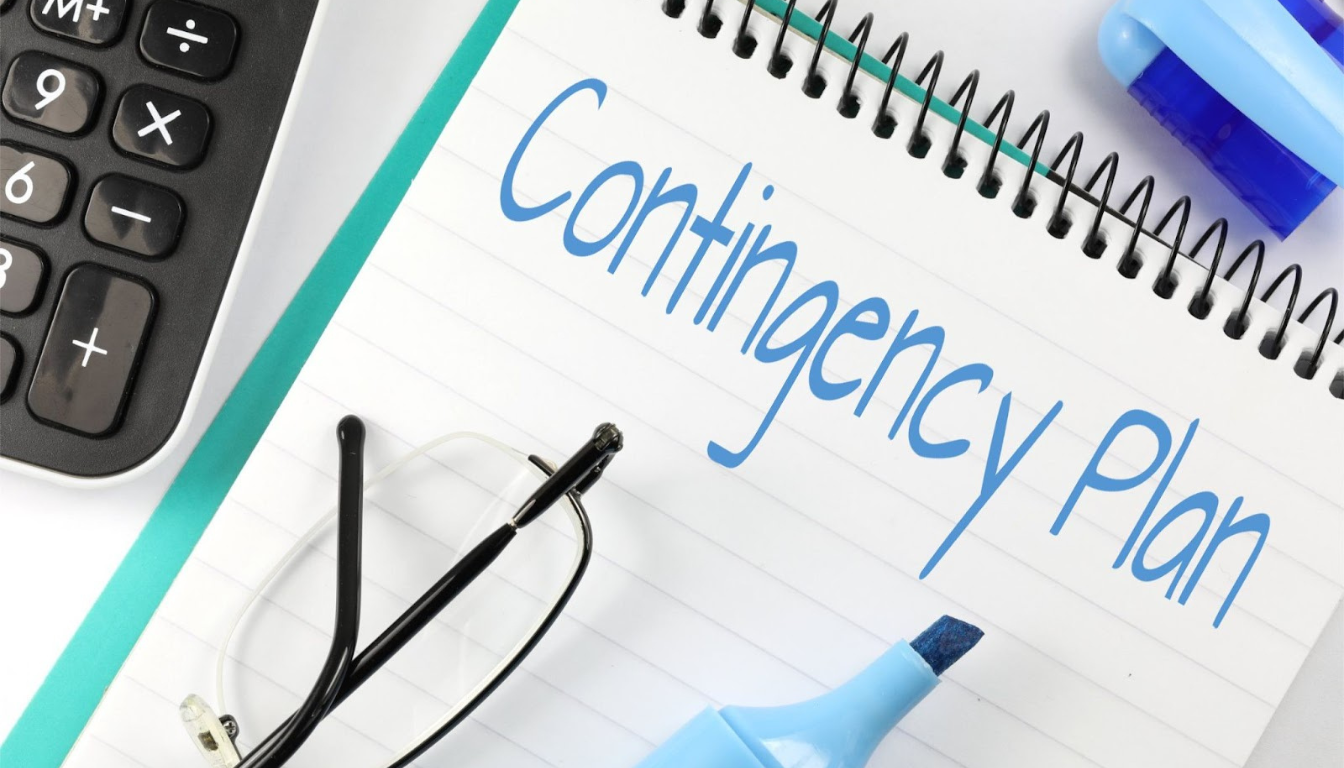Master Offsite Event Contingency Planning: Essential Steps & Tips

Offsite event contingency planning is essential for handling unexpected issues during corporate events or retreats. In this guide, you’ll learn steps to create effective plans, common risks to prepare for, and real-world examples to help your event run smoothly.
Key Takeaways
- Effective offsite event contingency planning is vital for managing risks and ensuring business continuity in the face of unforeseen disruptions.
- Identifying potential risks and conducting business impact analyses are essential steps in developing comprehensive contingency plans that prioritize recovery strategies.
- Regular testing, reviewing, and updating of contingency plans are crucial for maintaining their effectiveness and adapting to new challenges.
Importance of Offsite Event Contingency Planning

Contingency planning for offsite events is crucial for managing unexpected events and ensuring successful operations. Whether facing a minor hiccup or a major disruption, a well-prepared business contingency plan and contingency planning guide for crisis management contingency planning enables businesses to handle crises effectively and maintain smooth operations.
A robust contingency plan tackles both minor and major disruptions, enabling swift recovery. Effective planning enhances resilience and response to unforeseen events, offering a structured approach for assessment and recovery, minimizing disruption. A disaster recovery plan is essential for ensuring that organizations can bounce back effectively. A backup plan is also crucial for addressing potential gaps in recovery strategies.
Having a contingency plan profoundly impacts crisis management and overall business continuity plans. Preparedness for potential risks ensures businesses remain operational and resilient, even amid unexpected challenges. This proactive approach is a hallmark of successful organizations, emphasizing the importance of business continuity planning.
Common Risks in Offsite Events
Offsite events face various risks that can disrupt proceedings. The need for contingency plans has grown due to emerging threats like nuclear contamination and severe weather. Business processes are vulnerable to emergencies and human error, making risk identification crucial for business continuity and mitigating unexpected events.
Listing all the risks and potential risks is vital for effective risk management and risk assessment. This should cover logistical challenges, weather-related issues, and cybersecurity breaches. Understanding these risks helps businesses develop strategies to mitigate them, ensuring smooth event operations.
Not having a contingency plan can lead to significant financial losses, operational disruptions, and reputational damage. Identifying and addressing key risks can reduce risks and the likelihood of worst-case scenarios and ensures business risk is managed effectively for any challenges.
Steps to Create an Effective Contingency Plan

Creating an effective contingency plan involves key steps. It starts with identifying potential risks that could disrupt the event and evaluating their likelihood and impact. To create a contingency plan, this step-by-step guide ensures all relevant risks are considered.
Next, conducting a business impact analysis:
- Identifies critical data systems necessary for operations
- Predicts the consequences of potential risks
- Reveals business vulnerabilities
- Helps prioritize risks needing immediate attention
Finally, developing tailored emergency response plans for identified risks ensures a quick recovery in an emergency situation. These recovery strategies should include detailed plans for crisis communications, logistical arrangements, and roles and responsibilities during an emergency response plan.
Identify Potential Risks
The first stage involves:
- Listing potential risks and prioritizing them.
- Identifying risks through a thorough examination of realistic disruptions.
- Holding a brainstorming session with relevant stakeholders to ensure all perspectives are considered.
Creating a prioritized list of risks is crucial for effective management. This list should:
- Align with the scope and magnitude of identified risks.
- Be developed through regular team discussions to ensure comprehensive risk identification.
- Include proposed mitigation actions.
After creating contingency plans, monitoring for new risks is crucial to ensure best practice contingency planning remains relevant and effective.
Conduct a Business Impact Analysis
A business impact analysis (BIA):
- Determines how risks may affect operational functions.
- Helps understand business responses to unexpected events.
- Evaluates both impact and probability of risks.
- Prioritizes risks based on severity and likelihood using metrics like high, medium, and low.
Rating the severity of impacts on a scale from 1 to 100 and prioritizing risks accordingly ensures that the most critical risks are addressed first, leading to a more effective response and recovery.
Understanding the potential impact of risks on business operations allows companies to develop strategies to mitigate these risks and disrupt operations while maintaining normal business operations during a crisis.
Develop Response Strategies
Developing response strategies is crucial. Each strategy should clearly define team members’ roles and responsibilities during an emergency. Effective communication channels ensure everyone can effectively respond to their roles and responsibilities.
Logistical arrangements are also vital. Companies tackle logistical issues with contingency plans detailing transportation and equipment troubleshooting in the supply chain. For instance, backup transportation services can significantly reduce disruptions from delays.
Establishing criteria for triggering contingency plans ensures timely and effective responses. Comprehensive response strategies enable businesses to manage risks and ensure quick recovery during emergencies.
Allocating Contingency Funds

Budgeting for contingencies is critical. Setting aside 10-20% of the event budget provides financial flexibility for unexpected costs, ensuring surprises are managed effectively.
Calculating potential costs of each risk and including these in the contingency budget is essential. A well-defined budget for contingencies helps manage financial risks and ensures events run smoothly, even amid unexpected challenges.
Real-World Examples of Contingency Plans

Learning from real-world examples provides valuable insights into preparing for offsite events. A business impact analysis predicts the impact of specific risks and response strategies, helping companies manage disruptions effectively. Strong examples assist in building strategies to address business challenges, enhancing event preparedness.
The following subsections explore scenarios like weather issues, last-minute cancellations, and logistical challenges. Such a situation highlights practical preparations for corporate retreats and offers valuable lessons for developing effective contingency plans.
Weather Issues
Weather-related disruptions are common for offsite events. A notable case involved a company arranging alternate venues and indoor activities to counter unexpected weather changes. Having backup plans and a backup venue ready for unforeseen circumstances like weather changes or double bookings ensures the event proceeds smoothly.
Preparing for unexpected weather changes keeps the event engaging and successful despite bad weather. Planning indoor activities provides a valuable alternative, ensuring attendees remain engaged even if outdoor plans are disrupted.
Last-Minute Cancellations
Last-minute cancellations, especially involving key speakers or vendors, can significantly impact event schedules and lead to lost revenue. Common causes include illness, scheduling conflicts, and unforeseen emergencies, which can be considered a negative event. When disruptions occur, effective management strategies include having backup speakers or vendors and maintaining open communication.
Managing last-minute cancellations involves early risk identification and preparing contingency plans with alternative arrangements. Preparedness helps to minimize disruptions and ensures the event continues as planned.
Logistical Challenges
Logistical issues like transportation delays or equipment failures can significantly disrupt offsite events. Effective contingency planning minimizes the impact of these challenges on event operations. Disaster recovery planning should prioritize critical processes related to infrastructure and disaster recovery product delivery.
Planning for logistical issues ensures smooth event execution despite potential disruptions when properly planned. This includes having backup transportation options and established emergency procedures to tackle any logistical setbacks.
Best Practices for Offsite Event Contingency Planning

Executive support is crucial for successful contingency planning. Effective planning requires participation from internal and external stakeholders, including management, employees, suppliers, and sometimes external stakeholders like customers.
This collaborative approach ensures all perspectives are considered, making the contingency plan comprehensive.
Following defined activities per domestic and international standards is essential for developing a contingency plan. Regular reviews ensure it remains relevant and aligned with changing business needs. Regular reviews are essential due to the constantly shifting markets and industries.
Practical examples of contingency plans guide businesses in preparing for different disruptions. The team at Offsite has extensive experience managing offsite events, effectively handling logistical challenges. Leveraging Offsite’s expertise helps companies navigate common challenges in retreat planning and improve readiness for unforeseen issues.
Tools and Resources for Contingency Planning
Offsite offers a comprehensive planning service that reduces the time and stress of organizing retreats. Their platform centralizes all elements of event planning, ensuring a smoother process from start to finish. Offsite’s services support companies in building practical contingency plans and allocating appropriate contingency funds for corporate retreats.
The following subsections explore how Offsite can help with venue and vendor selection, the benefits of their flat fee structure, and leveraging their expertise for successful contingency planning.
Using Offsite for Venue and Vendor Selection
Offsite streamlines venue and vendor selection, allowing businesses to focus on quality while reducing time and costs. Their platform offers curated options for venues and vendors, expediting the selection process and ensuring quality.
Offsite provides access to a marketplace featuring thousands of vetted venues and vendors, offering substantial discounts and tailored venue selection based on each client’s specific requirements.
Benefits of Offsite's Flat Fee Structure
Offsite operates on a flat fee model, ensuring transparency and eliminating the risk of unforeseen costs when planning events. By charging a fixed fee, Offsite ensures clients have clear pricing upfront and avoid unexpected expenses during the planning process.
This approach provides budget transparency throughout the planning process, ensuring clients can manage their finances effectively in project management.
Leveraging Offsite’s Expertise
Offsite is an experienced partner in contingency planning for offsite events. Leveraging Offsite’s expertise, companies can effectively mitigate potential risks and ensure a successful event. Their experience equips companies to tackle common challenges during retreats, ensuring all aspects of the event are well-prepared and managed.
Testing and Reviewing Your Contingency Plan
Regularly testing and reviewing your contingency plan ensures its effectiveness. Conducting drills and exercises helps identify gaps in the plan and familiarizes team members with their roles during an emergency. These simulations provide valuable insights into the plan’s strengths and weaknesses, allowing for continuous improvement.
Post-event reviews are an essential part of the contingency planning process. Evaluating the plan’s effectiveness after the event helps identify areas for improvement and refine future strategies. Frequent assessments and updates ensure the plan remains relevant and ready to address new risks.
Summary
Mastering offsite event contingency planning involves understanding its importance, identifying common risks, and following a structured process to create and implement effective contingency plans. Allocating contingency funds, learning from real-world examples, and adopting best practices are essential steps in this journey. Tools and resources like Offsite can significantly enhance your planning efforts, providing the expertise and support needed to ensure a successful event.
By being proactive and prepared, you can turn potential disruptions into opportunities for resilience and growth. Embrace the contingency planning process, regularly test and review your plans, and leverage the resources available to you. With a solid contingency plan in place, your offsite events will be well-equipped to handle any challenges that come your way.
FAQs
- What is the estimated time frame for securing contracts through Offsite?
You can expect to secure contracts through Offsite within approximately one week. This timeframe allows for efficient processing and communication.
- What is the fee structure for Offsite's planning services?
Offsite's planning services have a straightforward flat fee structure with no hidden costs, ensuring transparency in pricing.
- How much can users save on corporate retreat planning through Offsite?
Users can save up to 50% on corporate retreat planning costs through Offsite, thanks to VIP service, concessions, and favorable contract terms.
- How quickly can users submit booking requests through Offsite?
Users can submit booking requests through Offsite in just a few minutes. This speed enhances the overall user experience significantly.
You may also like
Unique spaces for your next offsite
Find distinctive venues for your upcoming corporate retreat.
Stay Updated with Our Insights
Get exclusive content and valuable updates directly to you.







